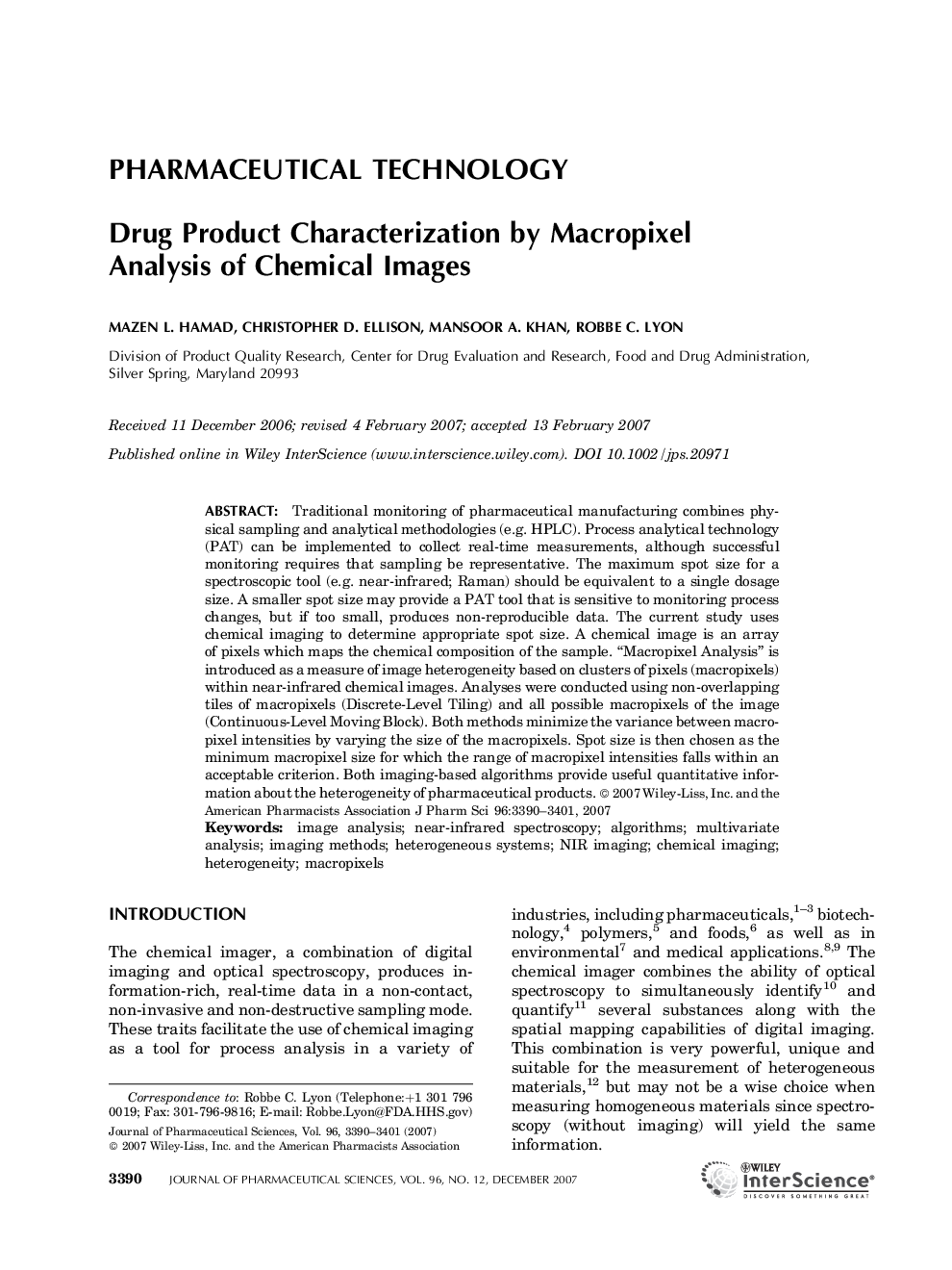| Article ID | Journal | Published Year | Pages | File Type |
|---|---|---|---|---|
| 2487637 | Journal of Pharmaceutical Sciences | 2007 | 12 Pages |
Abstract
Traditional monitoring of pharmaceutical manufacturing combines physical sampling and analytical methodologies (e.g. HPLC). Process analytical technology (PAT) can be implemented to collect realâtime measurements, although successful monitoring requires that sampling be representative. The maximum spot size for a spectroscopic tool (e.g. nearâinfrared; Raman) should be equivalent to a single dosage size. A smaller spot size may provide a PAT tool that is sensitive to monitoring process changes, but if too small, produces nonâreproducible data. The current study uses chemical imaging to determine appropriate spot size. A chemical image is an array of pixels which maps the chemical composition of the sample. “Macropixel Analysis” is introduced as a measure of image heterogeneity based on clusters of pixels (macropixels) within nearâinfrared chemical images. Analyses were conducted using nonâoverlapping tiles of macropixels (DiscreteâLevel Tiling) and all possible macropixels of the image (ContinuousâLevel Moving Block). Both methods minimize the variance between macropixel intensities by varying the size of the macropixels. Spot size is then chosen as the minimum macropixel size for which the range of macropixel intensities falls within an acceptable criterion. Both imagingâbased algorithms provide useful quantitative information about the heterogeneity of pharmaceutical products. © 2007 WileyâLiss, Inc. and the American Pharmacists Association J Pharm Sci 96: 3390-3401, 2007
Keywords
Related Topics
Health Sciences
Pharmacology, Toxicology and Pharmaceutical Science
Drug Discovery
Authors
Mazen L. Hamad, Christopher D. Ellison, Mansoor A. Khan, Robbe C. Lyon,
